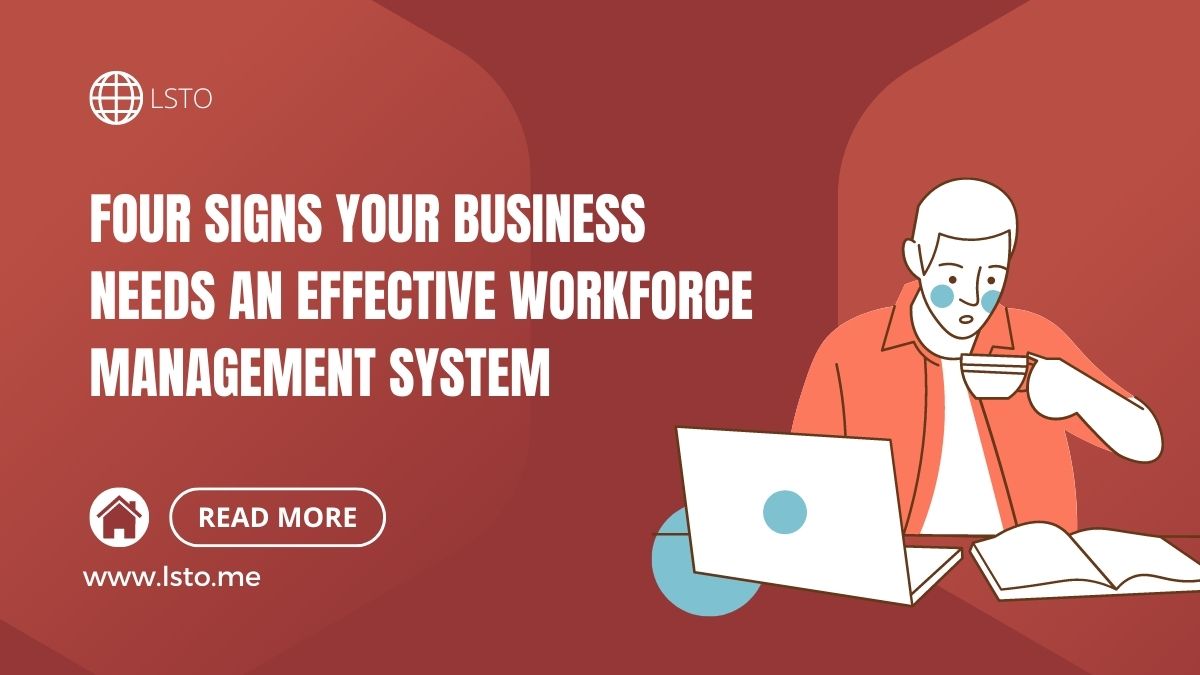
Having a successful business requires having an effective workforce management system in place. A poor or outdated system can hurt the efficiency and productivity of your organization, leading to wasted resources and unhappy employees. Knowing when it is time to invest in a new system or upgrade your existing one is essential for the growth and success of your business. In this article, we will discuss four signs that your business needs an effective workforce management system.
Understanding the Workforce Management System
Understanding the Workforce Management System is essential for any modern business. A workforce management system is a tool used to streamline and optimize the way an organization plans, schedules, and tracks the employment of its staff. It helps businesses to monitor labor costs, schedule shifts, forecast demand, control overtime, and review performance metrics.
Workforce management systems provide managers with a bird’s-eye view of their employees’ activities and allow them to accurately plan their resources based on real-time data. This means they can make informed decisions about staffing levels before employee burnout occurs or customer service suffers due to an understaffed team. Furthermore, efficient workforce planning enables organizations to minimize idle time and maximize productivity without risking overstaffing expenses or lost profits.
If you notice any of the following, you should upgrade to efficient workforce management software to assist you in making an informed choice:
1. Your Team Consists Of Many Different Types Of Employees.
Having a diverse workplace can be great for your business. A wide range of employees from different backgrounds and skill sets can help to add a variety of perspectives, experiences, and knowledge. However, having so many different types of employees doesn’t come without its challenges. You must have an effective workforce management system in place to ensure that these differences don’t lead to confusion or chaos.
A workforce management system helps to keep all of your employees organized and on the same page when it comes to job roles, expectations, and goals. This allows you to ensure that everyone is working together in harmony towards the same objective while ensuring each individual’s unique skill set is being used effectively. Furthermore, it enables you to track employee performance and monitor progress with ease.
2. The Manager Juggles Multiple Things.
Today’s managers have a lot on their plate. They need to keep up with the latest trends in technology, plan out team goals, and make sure that meetings stay on track. On top of all this, they are also responsible for juggling multiple tasks and making sure that everything gets done correctly and on time. It can be overwhelming for any manager to manage these tasks efficiently while leading an effective team.
If you find yourself or your department struggling to manage the workload of your employees, then it is likely a sign that your business needs an effective workforce management system in place. A workforce management system helps streamline processes by automating mundane tasks such as payroll, scheduling, and tracking employee performance metrics. This allows managers to focus more of their energy on higher-level activities like creating strategies for growth or improving employee engagement initiatives.
3. Employee Data Is Untrustworthy.
Employee data being untrustworthy is a sign that your business needs an effective workforce management system. Having accurate data about your employees is essential in managing and controlling labor costs, ensuring compliance with government regulations, as well as optimizing the workforce itself. A good workforce management system can help you keep track of employee data, from attendance to payroll and more, to accurately monitor the performance of your business and its staff.
By implementing a workforce management system into your business operations, you will be able to have real-time access to more reliable employee information that can be used for better decision-making. This type of software helps businesses gain insight into their labor costs and productivity goals by providing detailed reporting capabilities on daily activity metrics like hours worked or time off taken.
4. Employees Aren’t Productive And Lack Engagement.
The productivity and engagement of employees can be a great indicator to help you identify when your business needs an effective workforce management system. Every organization needs to have a way to track their employees’ time, attendance, and productivity, but it becomes especially important when your team is not performing up to expectation.
When teams lack engagement or fail to perform adequately, it could be a sign that the systems in place aren’t helping you leverage their talents as best as possible. A workforce management system enables employers to monitor employee performance and ensure that everyone is working together efficiently towards the same goals. It also allows businesses to take advantage of labor data from various sources so they can make decisions on staff scheduling and other aspects of human resources more effectively.
Finding The Right Workforce Management Solution
Finding the right workforce management solution can be a daunting task for any business. With so many options available, it’s hard to know which one is best suited to meet your organization’s specific needs. To ensure that you find the perfect system for your business, there are several factors to consider.
First and foremost, consider what type of workforce management software suits your company’s size and operating environment. If you have a small staff or operate in multiple locations, then an automated time-tracking system could be advantageous. Conversely, if you have hundreds of employees located across different countries or states then a complex human resources management system may be necessary. Additionally, make sure the software integrates well with existing systems such as payroll and accounting programs so data can flow easily between applications and departments.